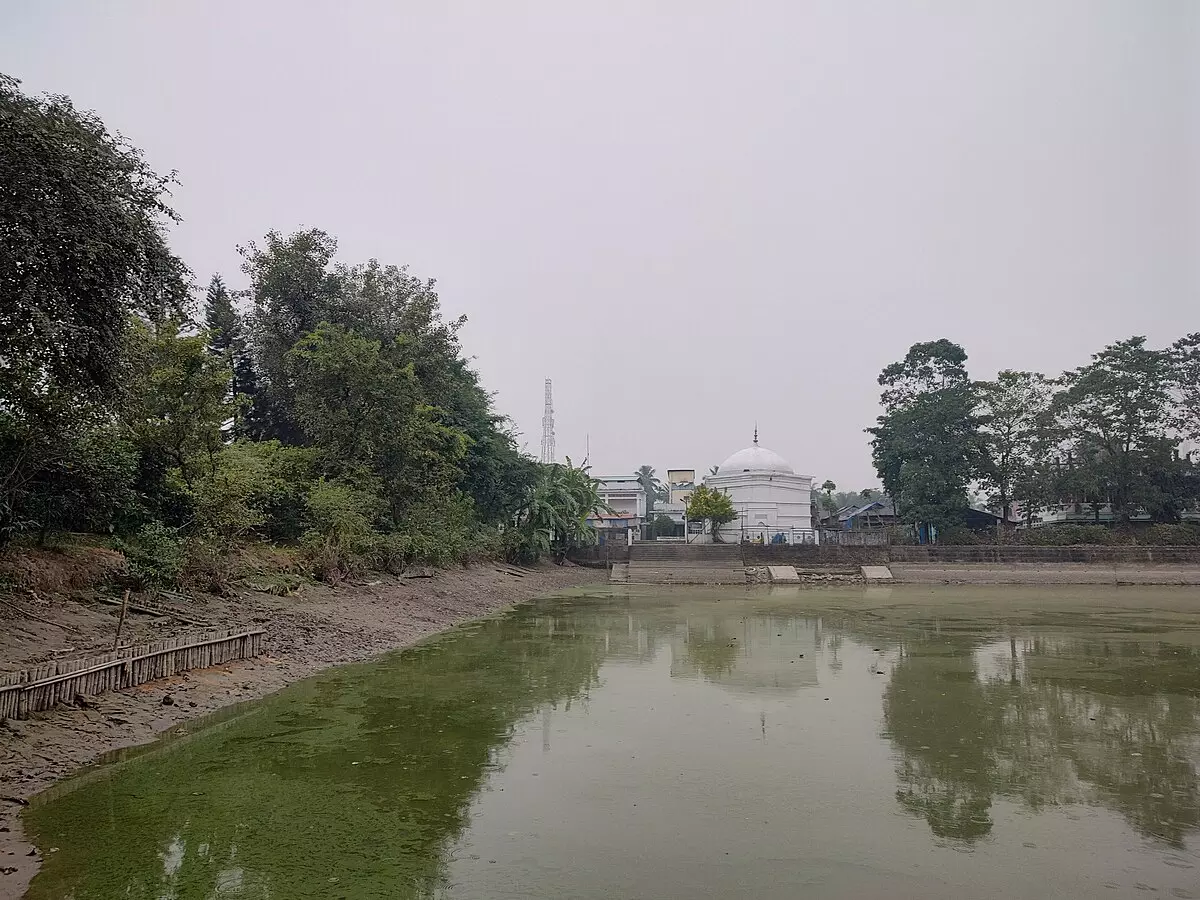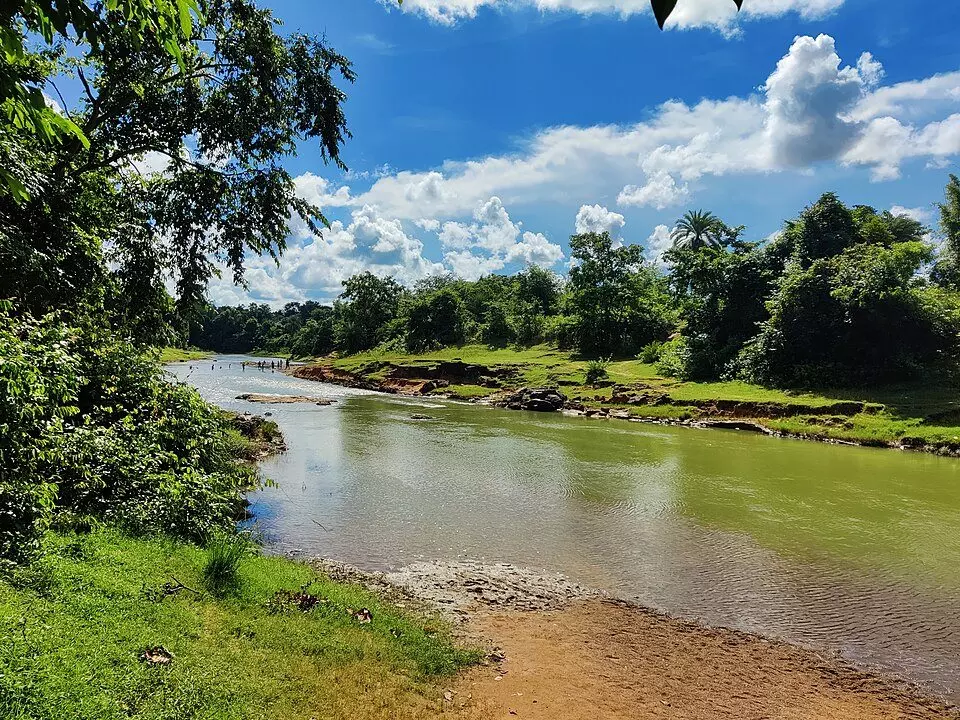
- Home
- India
- World
- Premium
- THE FEDERAL SPECIAL
- Analysis
- States
- Perspective
- Videos
- Sports
- Education
- Entertainment
- Elections
- Features
- Health
- Business
- Series
- In memoriam: Sheikh Mujibur Rahman
- Bishnoi's Men
- NEET TANGLE
- Economy Series
- Earth Day
- Kashmir’s Frozen Turbulence
- India@75
- The legend of Ramjanmabhoomi
- Liberalisation@30
- How to tame a dragon
- Celebrating biodiversity
- Farm Matters
- 50 days of solitude
- Bringing Migrants Home
- Budget 2020
- Jharkhand Votes
- The Federal Investigates
- The Federal Impact
- Vanishing Sand
- Gandhi @ 150
- Andhra Today
- Field report
- Operation Gulmarg
- Pandemic @1 Mn in India
- The Federal Year-End
- The Zero Year
- Science
- Brand studio
- Newsletter
- Elections 2024
- Events
How India’s Sacred Groves are protecting biodiversity in a time of ecological crisis
Rooted in traditional belief systems, sacred groves across states like West Bengal, Meghalaya, and Arunachal Pradesh are emerging as natural sanctuaries, preserving rare species and forest ecosystems

Traditional beliefs and need for preservation of the biodiversity, particularly in these times of alarming environment depletion, meld together in recognition of the Sacred Groves (SG) as biodiversity heritage sites. SGs are distinct patches of vegetation (ranging in size from a small cluster of a few trees to a large forest spanning several hundred acres) which are consecrated in the...
Traditional beliefs and need for preservation of the biodiversity, particularly in these times of alarming environment depletion, meld together in recognition of the Sacred Groves (SG) as biodiversity heritage sites. SGs are distinct patches of vegetation (ranging in size from a small cluster of a few trees to a large forest spanning several hundred acres) which are consecrated in the name of local deities or ancestral spirits. Removal of any living things from the SG is a taboo, although dead logs and leaves are sometimes removed.
In a recent dedicatory seminar on the Biodiversity Day (May 22), organised by the West Bengal Biodiversity Board, discussions on the ten SGs in the state revealed how divergent their profile can be, from the Birampur-Baguran Jalpai Intertidal Costal stretch, famous for the rare Red Crabs, to Baneswar Shiva dighi
(pond in Bengali) in Cooch Behar in North Bengal to Tonglu Medicinal Plant Conservation area near hilly Kalimpong.
“Sacred Groves are known to contain many rare and endemic flora. Our aim is to facilitate preservation of the pristine landscapes, its flora and fauna, that have not been disturbed by human interference for centuries,” says Himadri Sekhar Debnath, chairman of the West Bengal Biodiversity Board. To select the sites for preservation documentation has been done with help of the panchayats in 22 districts through the platform of People’s Bio-diversity Register, he informs.
In West Bengal, SGs are known as ‘thans’ with names like Gramthan, Haritan, Sabitritan, Jahera, Deo Tasara, Mawmund, etc. The reason why they have been able to maintain their pristine state, even in highly populated areas across India, is because of their association with religious or animistic beliefs. The sobriquet of ‘than’ or place of worship, makes people wary of desecrating the plants or forests around it. Many community taboos are imposed, and it indirectly helps to preserve the virgin conditions of the forest.
Also read: How Dharmasthala, Karnataka’s temple town, struggles to shake off its shame
“This institution is perhaps the best example of indigenous traditional resource use practices promoting conservation of biodiversity,” says Debal Deb, ecologist and conservation biologist, Kolkata. He points out that in West Bengal most SGs are found in the southwestern districts where the tribal populations are the largest, and where industrial development has not expanded enough to expunge indigenous cultural traditions.
The tribal SGs are characterised by the absence of any images of deities, but votive offerings are made at some trees within the grove. Flowers are a common feature of the worshipping rituals in all these groves. In central and eastern India, terracotta figurines of horses, elephants and bulls are placed at the base of one of the trees. “At the dawn of religious thinking, deities were imagined by primitive societies to reside in stones, trees, animals and woods. This animism seems to be an expression of the gratitude to and respect for nature for providing goods and services to human society,” says Deb.

Baneswar Shiva dighi (pond in Bengali) in Cooch Behar in West Bengal.
“The SG institution is associated by a range of oral narratives and belief systems, which are unique social means to prevent intra-group conflicts and violation of the traditional ethos by infringements by outsiders,” he adds. The motif of ‘divine punishment to the offender’ repeatedly appears in oral narratives of the SG myths, which has saved many of them from extinction in tribal villages of West Bengal, Deb found during his research.
Interestingly, many of them comprise a cross-religious institution and signify interpenetration of cultural traditions of the region, visited by both Hindu and Muslim devotees, like a Pir-than (Sufi saint’s shrine). In the Sundarbans, worshipping at Bon-bibi ‘than’ by honey gatherers and crab catchers of both faiths before entering the forest is common.
Chilkigarh sacred grove is the biggest SG in West Bengal, spread over 60 acre in the Jhargram district, along the Dulung River. It is here that the famous Kanak Durga temple is located, but the SG adjacent to it is much older; it was founded by King Bhim Singh in early 19th century. It contains about 388 species of herbal plants out of which over 105 species are of medicinal values. Besides, the forest also has 26 species of amphibians and reptiles. The SG is maintained by the Kanak Durga temple trust.
Another SG, Haldir Char, is a 6.4-hectare island situated in the Haldi River which boasts a unique mangrove swamp with regular tidal influences, supporting a variety of littoral fauna and indigenous fish species in its inland waterbody.
SGs are not only about forests. They can also be marked around certain sacred tanks and ponds, Deb points out. In Belboni village of Bankura district, an ancient pond is still used for drinking water; strict vigilance is maintained by villagers to keep it free from all pollution. In Jayanti of Jalpaiguri district, villagers continue to protect large catfish populations in a sacred pond inside a sacred grove. The Baneswar Shiva dighi with its tortoise population, some believed to be century-old, is another example.

Chilkigarh sacred grove is the biggest SG in West Bengal, spread over 60 acre in the Jhargram district, along the Dulung River. Photo: Wikimedia Commons
To raise public awareness about the importance of SGs, local bodies conduct tours keeping to the norms of preservation. In western parts of Assam, tribes like the Bodos and Rabhas who live in the plains and foothills, have a tradition of maintaining sacred groves which they also call ‘than,’ associated with a deity.
The Dimasa tribe of the Dima Hasao autonomous district are known for their respect shown to their sacred groves. This area is known more for Jatinga when every autumn thousands of birds ‘commit suicide’, a phenomenon explained by different theorists in different ways. The Dimasas are one of the oldest indigenous people living in Assam. They believe that they have six ancestral gods (Madai). The area-gods who hold control over the patches of forest have their own abodes (Dikho).
The National Botanical Research Institute (Ecoeducation Division) in Lucknow and the North Eastern Hill University, Shillong, have documented around 79 sacred groves in Meghalaya. Ownership of the groves could be individuals, clans or communities. They are under direct control of the clan councils or local villages which are variously known as Dorbars, Syiemships, Dolloiships, Nokmaships, etc.
Also read: How Bengaluru’s garbage is ruining lives of villagers in Karnataka’s Doddaballapur
The SG near Mawphlang, some 26km from capital Shillong, is huge and well-known. The Khasi community has been protecting this forest for more than 800 hundred years. They call it Law Kyntang (sacred grove) protected by deity U Ryngkew U Basa, a mystical creature: some say it is a ‘tiger’ while some believe it is a ‘snake’.
Mumbai-based journalist Anjali Mathur recently visited the Mawphlang SG. “For a city-bred person like me, it was a fascinating experience. I saw something unique. The guide told us many stories associated with the forest. Sacred Groves are indeed an important component in preserving biodiversity,” she says.
In Manipur, the worship and protection of forests is called Umanglai, associated with their deities. These groves are locally known as Gamkhap and Mauhak (sacred bamboo reserves). Arunachal Pradesh has the highest number of tribes in India. Some of these follow Buddhism, like the Monpas, who are basically a nomad tribe. Naturally, there are gompas or monasteries. The Gompa Forest Areas (GFAs) attached to them are looked after by the Lamas and the tribe people. In all, around 101 sacred groves have been documented in the state. Many sacred groves are dedicated to local deities such as Ubro or Ubram and Thouw-gew.
The Nallur Tamarind Grove in Karnataka was the first Biodiversity Heritage Site of India, declared in 2007. According to the National Biodiversity Authority, India has a total of 45 Biodiversity Heritage Sites as of February 2024.
At a UNESCO international workshop on the importance of sacred natural sites for biodiversity conservation (China, 2003), it was said, “In many non-western societies, traditional sacred areas fulfill functions similar to those of legally protected areas in the West...These sites have survived environmental degradation as they are well embedded in local cultures and traditional belief systems.”